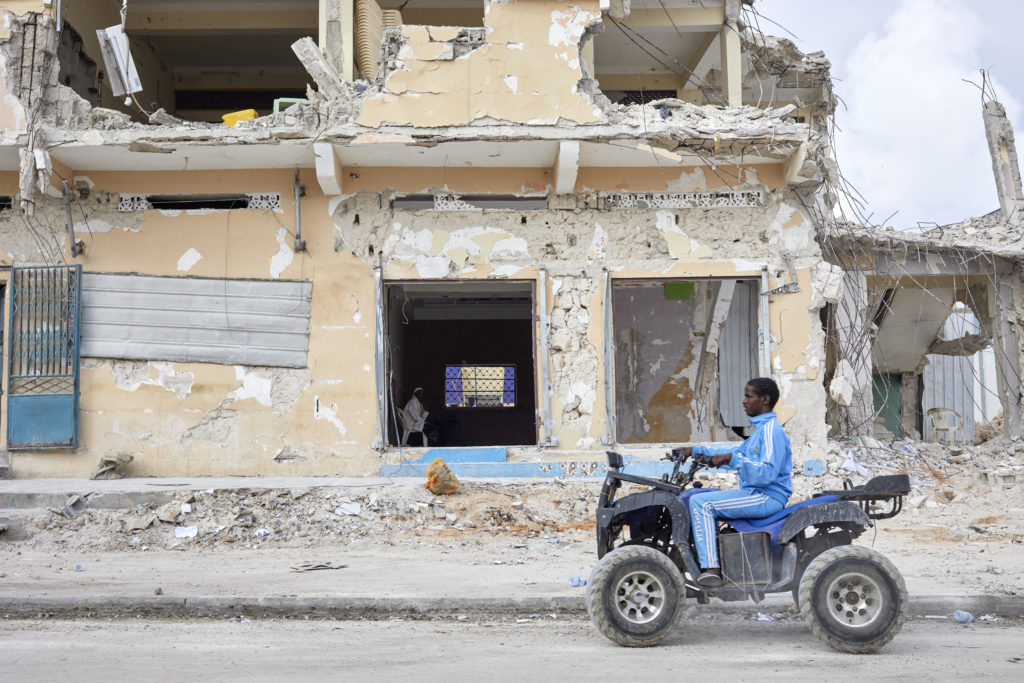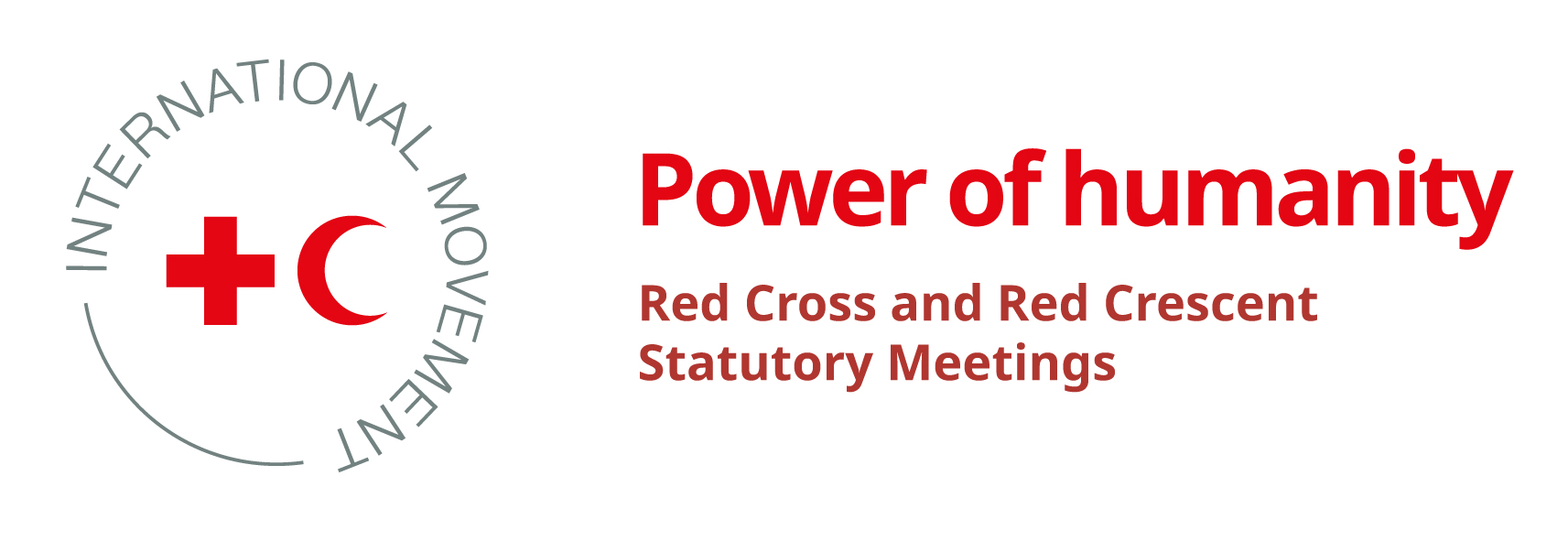The human toll of war in cities
By Eve Massingham, ICRC and Tobias Ehret, Norwegian Red Cross

The site of protracted armed conflict is shifting increasingly to cities. This is largely attributable to the rate at which the world is urbanizing: urban dwellers are expected to make up nearly 70 per cent of the world’s population by 2050, according to the United Nations. As borne out by recent history, armed conflicts in urban areas cause large numbers of civilian deaths, extensive and long-lasting physical and mental suffering, and widespread destruction of civilian homes and critical civilian infrastructure. The disruption of essential services – health care, water, food, sanitation, solid-waste disposal, electricity and education – exacts a severe human toll.
The International Red Cross and Red Crescent Movement originated in a desire to provide undiscriminating assistance to the wounded on the battlefield. We have a unique set of capabilities, and a role under international humanitarian law, to reach, protect and assist people and communities affected by war, including urban warfare. But all too often, our efforts are thwarted by the sheer intensity of urban warfare, by restrictions on access imposed by parties to conflict, by the destruction of essential infrastructure on which our services depend and, regrettably, by actions that threaten and often take the lives of our personnel.
At the 2022 Council of Delegates, the Movement adopted Resolution 6 – “War in cities” (CD/22/R6) – to express its grave concern about the humanitarian consequences of urban warfare witnessed by its staff and volunteers. The resolution acknowledged that while urban warfare was not a new phenomenon or one with entirely unique humanitarian consequences, the suffering and devastation it caused was on such a scale as to merit more attention. It required new approaches by authorities, armed forces and humanitarian actors.
An action plan was agreed on to guide the Movement until 2027 in responding to and mitigating the humanitarian impact of war in cities. The Movement is using the action plan to work towards documenting more accurately the humanitarian impact of war in cities; strengthening its operational response; raising awareness of the devastating humanitarian consequences of urban warfare; and influencing states and conflict parties, through humanitarian diplomacy, to strengthen their legal and policy frameworks and alter the conduct of conflict in urban areas. A Movement Reference Group (MRG) was established in early 2023, to coordinate implementation of the action plan, share updates, and exchange operational experiences; the MRG is led by the ICRC and its membership now includes 41 National Red Cross and Red Crescent Societies.
Specific activities under the action plan are pursued either collectively, in smaller working groups, or on their own by individual National Societies. A number of different activities have been initiated in the last six months. The MRG has arranged information-sharing sessions – for example, on the use of open-source data for humanitarian analysis – is producing factsheets on humanitarian subjects of relevance to urban warfare, and is finalizing an online course on war in cities that will soon be available on the IFRC Learning Platform. A number of National Societies have organized ‘war in cities’ study days, picture exhibitions or seminars to publicize the Movement’s humanitarian concerns.
The Syrian Arab Red Crescent and the ICRC are preparing guidance for mobilizing the capabilities needed to carry out humanitarian activities in urban conflict settings; they are building on the operational experience gained during their partnership in Syria. Various initiatives in connection with securing safe access for humanitarian activities in urban conflict settings are also being undertaken: for instance, the Norwegian Red Cross is studying how providers of essential services – involved in operating, maintaining, or repairing critical infrastructure – can be better protected. The use of explosive weapons in populated areas has been a prominent theme of discussions linked to the MRG’s humanitarian diplomacy: the Portuguese Red Cross has hosted a regional meeting on this subject for legal advisers from European National Societies.
The Movement has, through a series of consultations over the last few years, worked to identify some of the measures that states can take to address the humanitarian challenges created by urban warfare. For example:
- making the protection of civilians a strategic priority while planning and conducting military operations
- ensuring closer compliance with existing humanitarian law
- reviewing the doctrines, training, planning, tactics and choice of weapons associated with urban warfare
- avoiding the use of explosive weapons in populated areas
- helping allies and partners of conflict parties to frame their support in ways that help ensure high levels of protection for civilians and civilian objects.
The Movement’s work is not taking place in a vacuum. Global processes, including the adoption by 83 states of the 2022 Dublin Declaration – “Strengthening the Protection of Civilians from the Humanitarian Consequences Arising from the Use of Explosive Weapons in Populated Areas” – and special meetings of the UN Security Council on urban warfare are evidence of the international community’s awareness that more must be done to protect civilians when fighting takes place in urban areas.
The Movement looks forward to working with states over the next year to ensure that at the 34th International Conference in October 2024, the challenges created by urban warfare are fully understood and acknowledged; and, just as important, that practical measures are proposed, adopted and implemented in the coming years, so that we can put an end to the large-scale destruction and suffering so often caused by urban warfare.
Read more about this topic
Council of Delegates War in Cities Resolution and MAP_22-June-2022_FINAL_EN.pdf
Explosive Weapons with Wide Area Effects: A Deadly Choice in Populated Areas | International Committee of the Red Cross
Reducing Civilian Harm in Urban Warfare: A Handbook for Armed Groups | International Committee of the Red Cross
Towards More Effective Humanitarian Operations in Urban Areas of Protracted Armed Conflicts | International Committee of the Red Cross
Joining Forces to Combat Protracted Armed Conflict (ICRC, World Bank, and UNICEF)
Urban warfare Archives – Humanitarian Law & Policy Blog (icrc.org)
The International Committee of the Red Cross, the International Federation of Red Cross and Red Crescent Societies, and the Standing Commission of the Red Cross and Red Crescent, in its function as Trustee of the International Conference of the Red Cross and Red Crescent (the Conference), cannot be held responsible or liable in any manner for any user-generated content or posts on this Database. In the event that the Website team considers any post or content to be incompatible with the Fundamental Principles of the International Red Cross and Red Crescent Movement and/or with the objectives of the Conference, it reserves the right to remove such content.




